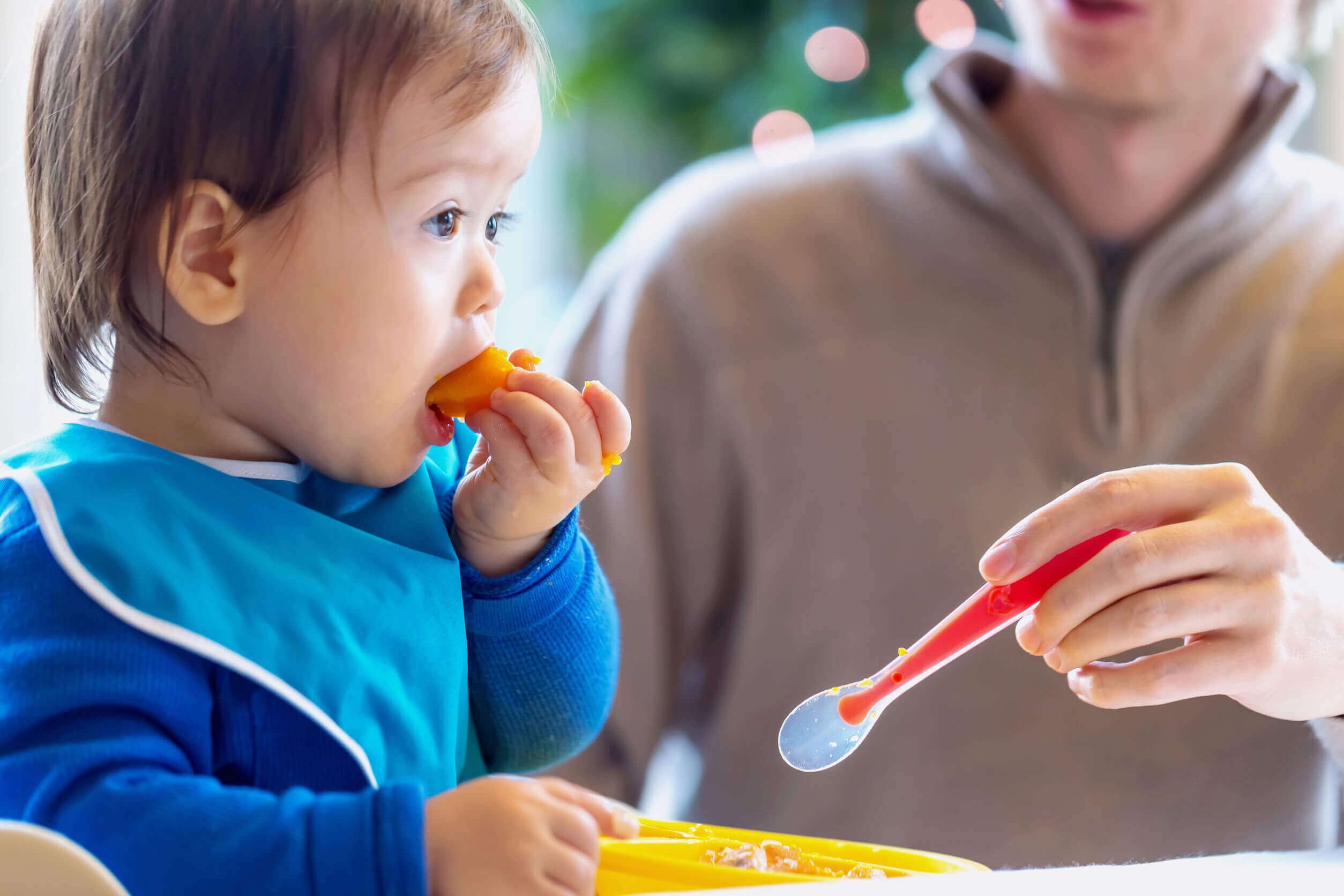How to Start Giving Food to Your Baby Without Mashing It?
From 6 months of age, you can start offering food to your baby without mashing it as long as some requirements are met.

There comes a time when you have to start giving your baby food without mashing it. It may seem like a difficult step, but it’s actually something that’s very natural and intuitive. With a series of key tips, you’ll get through this stage without any major complications.
Just the same, remember before the age of 6 months, the best food for your child is exclusive breastfeeding. After this point, you can start complementary feeding, which doesn’t replace the breast, but rather adds other ingredients and nutrients to your child’s diet.
Many parents choose to start with baby food, but others start directly with small pieces of semi-solids. If you’re in the second group, take note of the tips we have for you below!
When to start feeding a baby without mashing food?

For several years, pediatricians have recommended giving babies food without mashing it from the beginning of complementary feeding, around the sixth month. The truth is that, at this point in life, children have the ability to chew soft pieces of food. However, they must be monitored at all times to avoid accidents.
This change in the way parents offer food has become very popular in the last decade, under the name of baby-led weaning (or BLW). This method is much more than a feeding technique, but it’s largely based on the fact that children are able to feed themselves from the beginning of complementary feeding. This is supported by a study published in the journal Current Nutrition Reports.
Therefore, children quickly become familiar with different textures, colors, and flavors as they manipulate foods themselves. This encourages the acceptance of foods and reduces rejections or future selectivity. This achievement is of vital importance, as maintaining a varied diet throughout life helps prevent many diseases.
Guidelines to follow in order to feed your baby without mashing their food
When including foods in a baby’s diet without mashing, it’s important that a series of basic conditions are met in order to guarantee the safety of the child. These are the following:
- The child must be over 6 months old.
- They must be able to support their head on their own and keep their torso erect, even if they need the support of a backrest.
- They show interest in the foods that adults eat.
- The child no longer possesses the extrusion reflex of the tongue.
- They’re able to handle food with their hands and can put it in their mouth.
If all these requirements are met, the first pieces of food can be offered without problems. Of course, it’s best to start with easy-to-chew fruits or cooked vegetables.
The key is to achieve a soft but firm consistency (that doesn’t fall apart when handled) and to cut the foods in such a way that the child can grasp them in their hands. The main objective is for your little one to experiment with them and also to put them in their mouth to get to know their taste and texture.
Keep in mind that, during the early stages of life, it’s best to include as many varieties of vegetables as possible in the diet. Regular consumption of these products has been shown to reduce future mortality, so you should get babies used to their organoleptic characteristics from an early age.
What if my baby still doesn’t have teeth?
You shouldn’t worry if your baby hasn’t yet started the teething process, as they’re able to chew soft foods with their gums. In fact, the absence of teeth in the mouth isn’t a contraindication when it comes to starting complementary feeding using the BLW method.
Of course, in the event that your child feels uncomfortable due to the emergence of their teeth, prioritize a supply of soft and cold foods. These will give them immediate relief.

From 6 months on, you can introduce foods without mashing them
As we’ve already stated, from 6 months of age, you can start including foods in your baby’s diet without mashing them. In fact, experts recommend not delaying this moment beyond 10 months, as it could lead to a greater number of food rejections in the future. At the same time, it’s good to accustom children to different textures and flavors from an early age.
Just the same, if you have any doubts about it, you can always consult your pediatrician. Most of the difficulties reported by parents in this process are related to teething discomfort, so the diet will simply have to be adapted to this process.
Remember that the most important thing about complementary feeding is to increase the variety of nutrients and, in this regard, it’s best to plan a balanced and comprehensive diet from the beginning.
